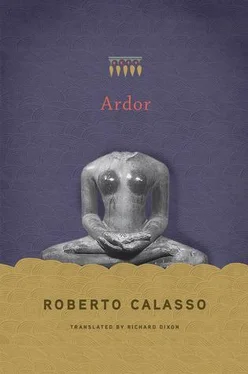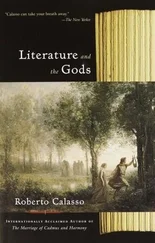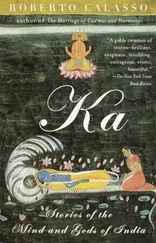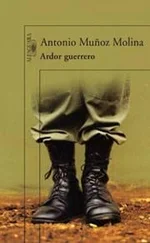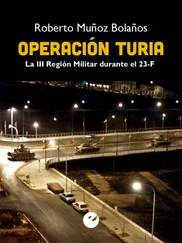* * *
The translation of ṛta will nevertheless remain a worry for Indologists, as Witzel has stressed: “There simply is no English, French, German, Italian, or Russian word that covers the range of meanings of this word.” And yet a good approximation does exist, at least in Witzel’s mother tongue — and it is Weltordnung , “world order.” But, for confirmation, we need the help of Kafka. Anyone wanting an introduction to the meanings of ṛta might begin their personal initiation by reading the chapter in The Castle where there is a nocturnal dialogue between the counselor Bürgel and K. — a dialogue culminating in two sentences that could be attributed to one of the Seven Seers: “That is how the world itself corrects the deviations in its course and maintains the balance. This is indeed an excellent, time and again unimaginably excellent arrangement, even if in other respects dismal and cheerless.” Wilhelm Rau observed that Renou himself wavered between two solutions when translating ṛta : “the cosmic Order” and “the regular ‘course’ of things = ordo rerum. ”
* * *
Questions of etiquette immediately arise: what should the sacrificer do as soon as he has taken his vow? What is the correct way to behave, so as not to defeat his purpose? First he must fast. Then, the night before the start of his planned rite, he should sleep on the ground, in the house of the gārhapatya fire. These are the first two rules of sacrificial etiquette.
But why is this? The vow is a way of welcoming the gods as guests — and is immediately perceived as such, for the gods see every movement in the mind of man. And so the first aim of the vow is to make space, to keep the area around the fire clear, since it is there that these new guests, the gods, sit waiting for their food. This is enough to link fasting with a rule of good manners: never eat before your guests. Then, when it is time to sleep, the sacrificer stretches out on the ground beside the fire. This is the first scene of the new life after taking the vow: a fire lit, protected by its house; invisible presences — the gods — who gradually gather around; a man sleeping on the ground: it is the sacrificer, who in this way starts to befriend the gods. He breathes together with them, he warms himself together with them. But he has to sleep on the ground, again as if by a rule of etiquette, reaffirming the immeasurable distance between the new guests and the man stretched out beside the new fire: “For it is from below, so to speak, that one serves a superior.”
Once the “vow” ( vrata ) has been introduced, once the āhavanīya and gārhapatya fires have been introduced, once truth and untruth have been introduced, what is the next step? The act of yoking something to something else. The sacrificer “yokes” the water to the fire. And he announces it with an “indistinct” ( anirukta ) voice. Here, the yoking resembles what occurs in yoga (“yoke,” “junction”). It is a gesture of the mind taking hold of itself. This assumes that the mind is always a double entity, where two parts act upon and yield to each other. This is the exercise (the áskēsis , “ascesis”) behind all else. When, in the Bhagavad Gītā , Kṛṣṇa urges that it is good for the mind to be “yoked,” yukta , this is what is meant. The immobility of the lone renouncer is only a final outcome of this discipline. Its first manifestation is in gesture, in the liturgical act. Indeed, any liturgy takes this yoking for granted. And this continual reference to a precise mental action is perhaps the distinctive, recurring feature in all Indian thought, from the Vedas to the Buddha — and up to the Vedānta. But how does this act occur, by which the mind (or two elements — water and fire — that represent it) begins to act upon itself? This is the first and last question: “‘Who ( Ka ) yokes you to this fire? He yokes you. For whom does he yoke you? For him he yokes you.’ For Prajāpati is indistinct ( anirukta ). Prajāpati is the sacrifice: and thus he yokes Prajāpati, the sacrifice.” Who, Ka , performs the act? The answer is given in the question: who acts is “who?” Ka , the secret name of Prajāpati, whose deeds the Brāhmaṇas are, in a certain way, recounting. And so elsewhere it can be said that “Prajāpati is he that yokes, that yoked, the mind for that sacred work.” And we also learn that that gesture, in the liturgy, precedes another: “They yoke the mind and they yoke the thoughts.” But before introducing himself with the name of Prajāpati, he steps forward, as if his shadow had appeared before he had, with the name Ka, the most mysterious, the most indefinite, the one that most radically expresses the difference between this being who preceded the gods and the gods themselves. And the name Ka arises in the most fitting way: murmured with an “indistinct” voice, anirukta. For all that is anirukta belongs to Ka: it is the implicit that can never become explicit, it is the “limitless unexplicit” (according to Malamoud’s formula), the unsaid that can never be said, the indefinite that will always escape definition. The whole liturgy is a tension between the form that is expressed ( nirukta ) and the indistinctness ( anirukta ) from which it arises. The latter is Prajāpati’s part. This is also because Prajāpati is made up of all the other gods, but without it being possible to say — as Sāyaṇa comments in relation to Śatapatha Brāhmaṇa , 1.6.1.20—that he is “this or that.” He has to be remembered, he has to be taken into account, in every action, in every thought. Every action, every thought will be a move in the unresolved contest between those two ways of being.
With the first, simple action of moving forward carrying water, the sacrificer could already claim to have completed his task, since “with this first act he conquers all this [the world].” The liturgical setting begins to take shape. Meanwhile it is said that the water ( āpas ) is “all-pervasive”—playing on the root āp -, “to pervade”—and so reaches everything, and hence is used as a remedy to make up for the shortcomings of the officiants, in case they are ever unable to achieve everything. Then it is said that water is “a thunderbolt,” as we can understand by observing that where it flows, it erodes the earth. And water as a thunderbolt has already been used by the gods to defend themselves from the Asuras and the Rakṣas, the evil demons who continually disturb them while they are celebrating sacrifices. These arguments ought to be enough to explain the use of water. And its dangers, since dealing with water is like handling a thunderbolt. But what then might be the purpose of water in the liturgy? Firstly sexual. Once set down to the north of the gārhapatya fire, its fruitful coitus with the fire begins. The sexual act is the first example of an action that is both yoking and yoked, an action underlying everything else that takes place in the sacrificial work. And so we read a little later: “Let no one pass between the water and the fire, so that in passing he does not disturb the coitus which is taking place.” Eros is a certain state of tension that is only established if the distances are correct. The most common relationship, though, between water and fire is not erotic attraction, but rivalry. If the water was placed too far away, beyond the point exactly to the north of the fire, the fire itself would show its aversion. But also to stop too early, before the erotic tension is established, would be an error and a risk. It would in fact mean not reaching “the fulfillment of desire ( kāma ), for which he had carried forth the water.” The final key word, desire, kāma , appears here. And its precariousness can immediately be seen. Placing the water jug in the wrong place would be enough to bring down the whole vast edifice of sacrificial acts.
Читать дальше
